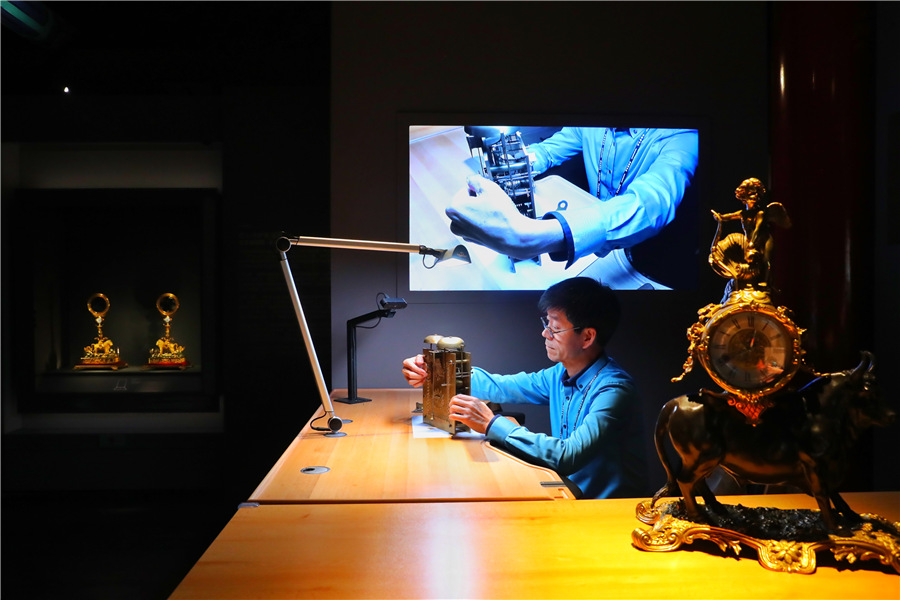 |
|
Wang Jin, an antique clock restorer, demonstrates his craftsmanship to visitors at the exhibition. [Photo by Jiang Dong/China Daily] |
The Palace Museum is generally believed to hold one of the world's best collections of mechanical clocks from the 17th and 18th centuries, thanks to the wealth of the Qing Dynasty (1644-1911) emperors and their habit of ordering the latest timepieces from Europe.
"The level and quality of the (timepiece) objects from the Forbidden City's collection is just extraordinary," says Pierre Rainero, Cartier's director of image, style and heritage. "It's even difficult to find their equivalent in Europe because many of them were destroyed over time."
Other precious timekeeping instruments from both institutions help to form a cultural dialogue. For example, a similar pair of gravity clocks from the collections of the Palace Museum and Cartier are presented together for juxtaposition. The clocks, whose movements are driven by gravity that makes them roll down slowly on an inclined base, both have to be reset by hand.
There are also abundant exhibits of "mystery clocks", the signature objects made by Cartier where clock hands appear to "float" on transparent dials without any apparent connection to the movement. Elements of Chinese inspiration were also used in the decoration of these timepieces.